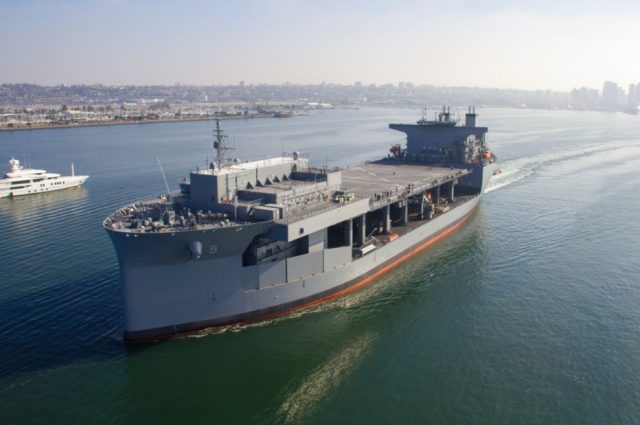The US Navy commissioned its third expeditionary sea base ship USS Miguel Keith (ESB 5), in a May 8 ceremony at Naval Air Station North Island, in California.
The ship was formally commissioned after being handed over in November 2019, six months later than scheduled. The delivery was delayed by damages during a dry dock flooding accident caused by a collapsed barrier.
Adm. Craig Faller, commander, US Southern Command, delivered the commissioning ceremony’s principal remarks.
Capt. Troy A. Fendrick, a native of Tempe, Arizona, is the ship’s commanding officer and leads a crew of roughly 100 military officers and crew, alongside 44 military sealift civil service mariners.
The 233-meter ship will be part of the forward deployed naval force operating from Saipan, the largest island in the Northern Mariana Islands located about 120 miles north of Guam.
The ship, named in honor of Marine Corps Vietnam veteran and Medal of Honor recipient Lance Cpl. Miguel Keith, was built in San Diego by General Dynamics NASSCO and was delivered to the Navy on Nov. 15, 2019.
USS Miguel Keith is the third ESB in the Montford Point-class of ships that is comprised of five ships across two variants, two expeditionary transfer docks and three expeditionary sea bases. The ESB were initially envisioned as support ships, bearing the USNS designation and having a mixed civilian and US Navy crew. The navy changed its mind in 2017, when it commissioned USS Lewis B. Puller (formerly USNS Lewis B. Puller) in order to be able to conduct military operations directly from the ship in line with international laws of armed conflict.
Under the law of armed conflict, missions such as special operations staging and mine-countermeasure operations must be conducted by a warship.
These vessels are highly flexible platforms that provide logistics movement from sea to shore supporting a broad range of military operations. The ESB is designed around four core capabilities: aviation facilities, berthing, equipment staging area, and command and control.
ESB ships have an aviation hangar and a flight deck that includes four operating spots capable of landing V-22 and MH-53E equivalent helicopters, accommodations, work spaces, and ordnance storage for an embarked force.
The platform will also provide unmanned aviation vehicle operations, enhanced command and control, communications, computers, and intelligence capabilities to support embarked force mission planning and execution.



























